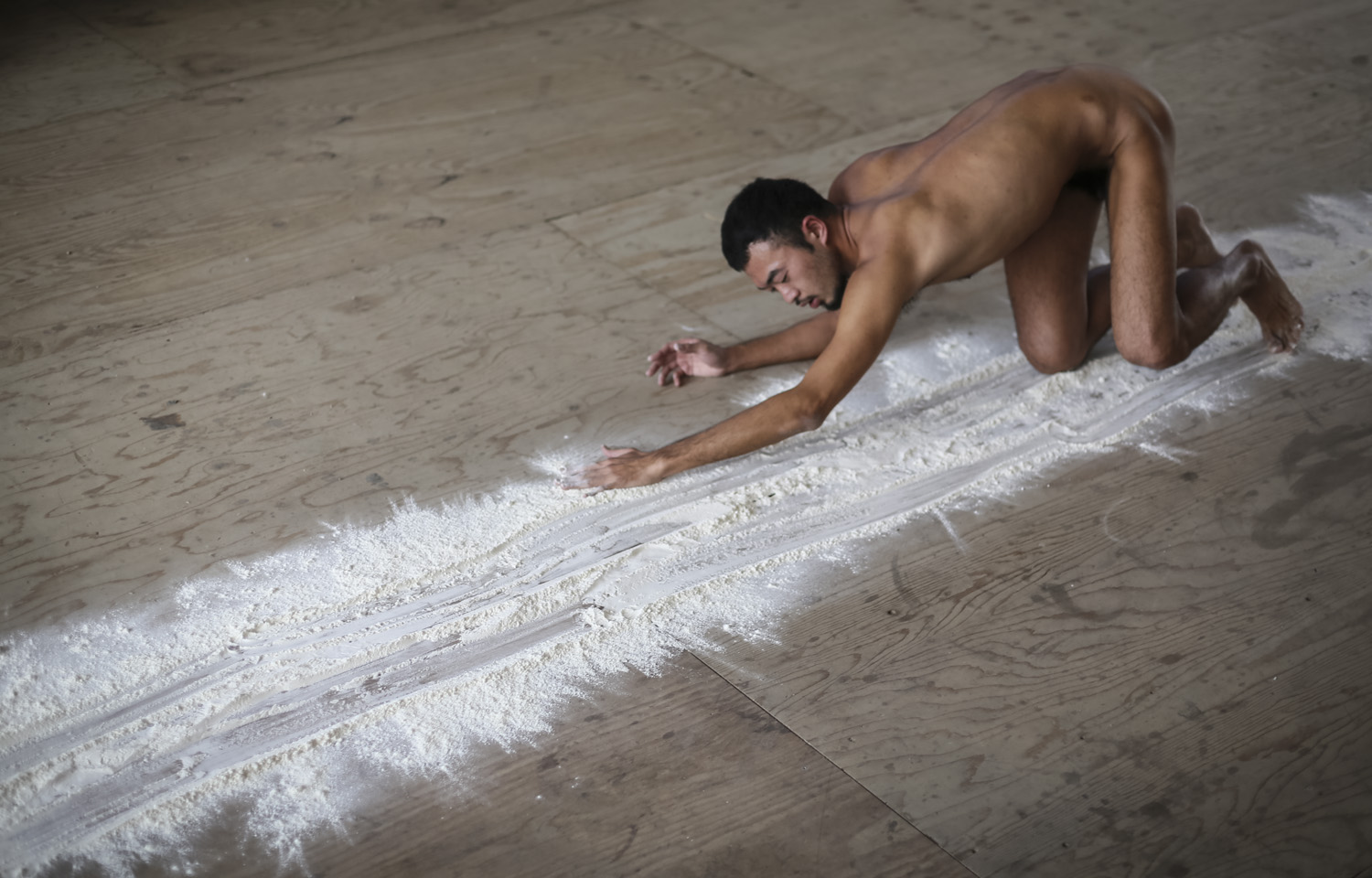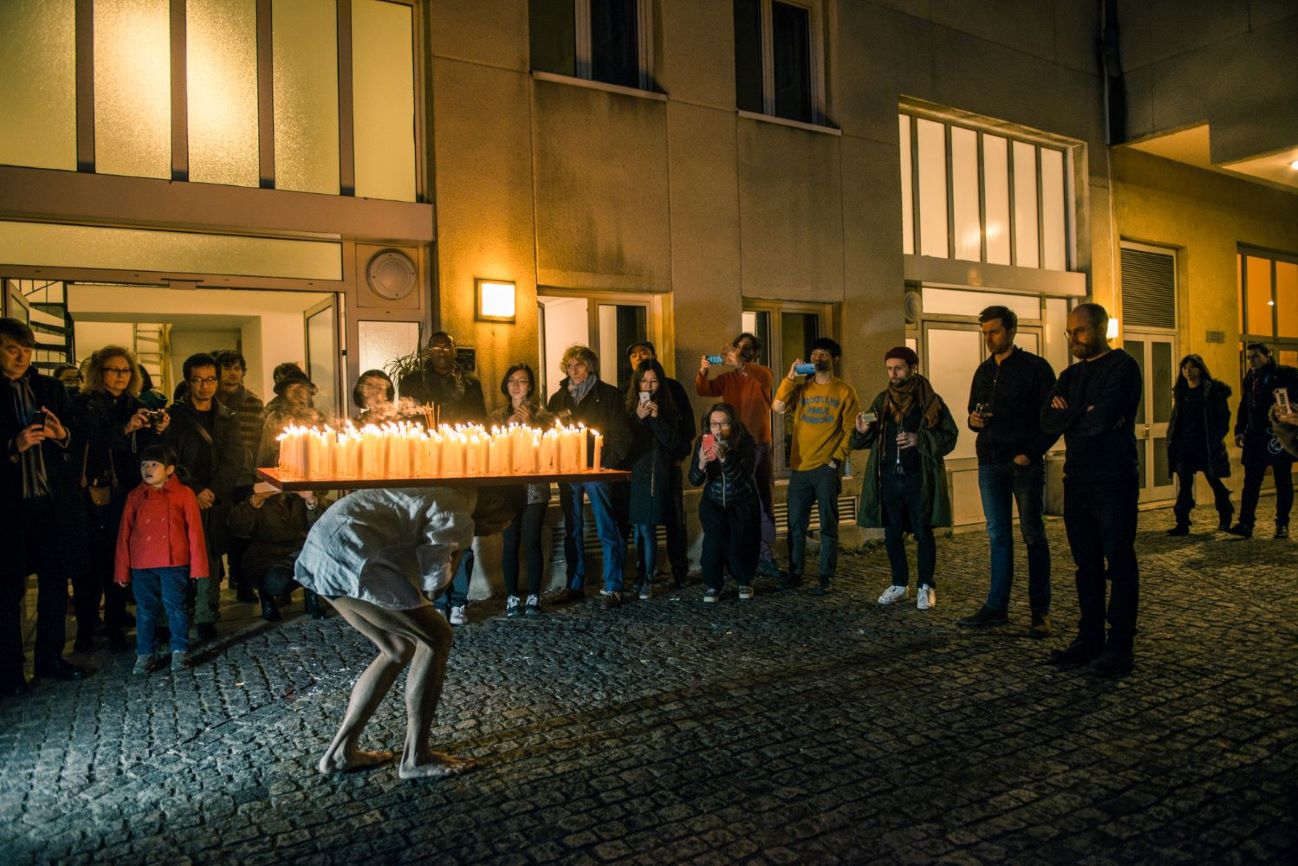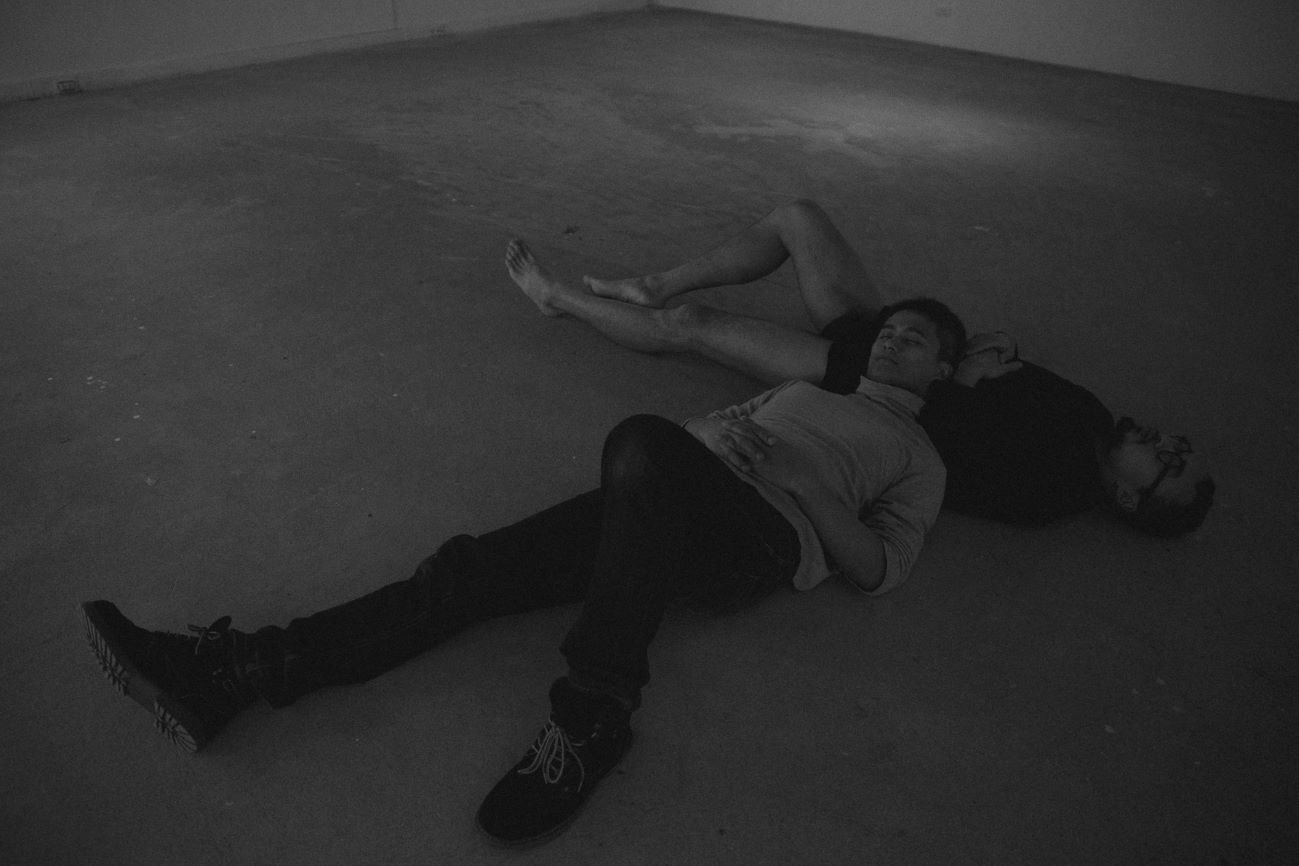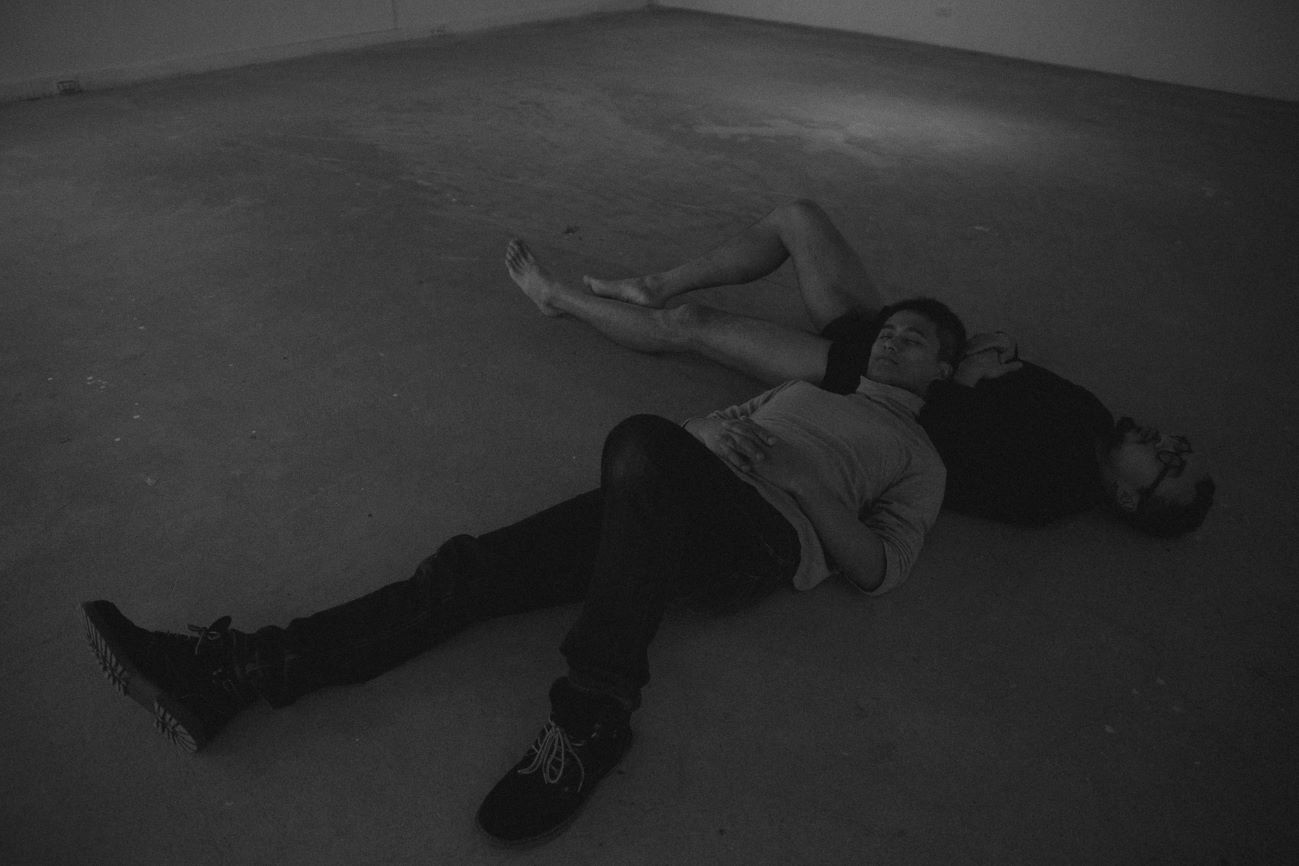The residency at the International City of Arts (Cité Internationale des Arts) in Paris in 2015 was a life-changing experience through self-exploration and a deeper understanding of the world.
At 27, before military service, I discovered performance art, which awakened my passion for creativity and led me to shift to Live Art. After completing my service in 2011, I began presenting my work at events such as the Against-Again Troupe and the Close to You International Performing Object Festival, while also exploring the essence of performance and Live Art. Due to the limited research available in Mandarin, I turned to English to explore how visual art, performance, and dance intersected in Western art history from the 1960s to the 1970s. I also looked into European events, festivals, organizations, and artists' practices around the 2010s, as well as related academic articles and art reviews. During my self-study process, I gradually realized that I wanted to be "on-site." I wanted to witness those performances firsthand, meet the practitioners and researchers, and engage in creation and dialogue within those settings. In 2012, during a solo trip to Berlin, I discovered the works of choreographer Boris Charmatz and Rimini Protokoll. In 2013, I collaborated with Lin Wen-chung on dance and choreography in Taiwan. In 2014, with support from the National Culture and Arts Foundation's "Overseas Arts Travel" program, I visited Berlin's Month of Performance Art, the Performance Art Archive in Cologne, the Kunstenfestivaldesarts in Brussels, and the London Live Art Development Agency. After returning to Taiwan, I participated in "Artists at TAV" (Taipei Artist Village), curated by Chin Ya-chun. With these experiences, I arrived in Paris in February 2015.
 In 2014, during field research in Europe funded by the National Culture and Arts Foundation’s "Overseas Arts Travel" project, I presented my work at Berlin's Month of Performance Art. Photo credit: by Aleks Slota.
In 2014, during field research in Europe funded by the National Culture and Arts Foundation’s "Overseas Arts Travel" project, I presented my work at Berlin's Month of Performance Art. Photo credit: by Aleks Slota.
At 30, during my 6-month residency in Paris, my schedule was packed with attending performances, exhibitions, and lectures, as well as performing, reading, and making new friends. Knowing I was starting later than most, I was determined not to miss any opportunities to broaden my horizons. Without local connections in Paris, I had to create opportunities for myself. I pushed myself to attend exhibition openings and, after connecting with a gallery owner, I wrote my own proposals and recommended myself for performances. I also held my Open Studio event earlier in the residency, rather than at the end, to allow more time for follow-up and further engagement after the performances. After each performance, I was fortunate to meet some professionals in the audience, and these new connections often led to future performance opportunities. Although breaking into the Paris art scene in just 6 months was nearly impossible, I gradually started to see discussions, introductions, connections, and recommendations. This is how I began to establish myself.
 Early in my 2015 residency, I organized an open studio event to showcase performance art. Photo credit: Chen Juo-hsuen.
Early in my 2015 residency, I organized an open studio event to showcase performance art. Photo credit: Chen Juo-hsuen.
 During the 2015 residency, I presented a performance art piece by invitation from Galerie Sator. Photo credit: Gaspard Noel.
During the 2015 residency, I presented a performance art piece by invitation from Galerie Sator. Photo credit: Gaspard Noel.
During that time, watching numerous performances and reading extensively was essential. It helped me develop a contextual perspective for understanding and analyzing performances, and to reflect on related theoretical research based on my live performance experiences. In addition to reading online articles, I bought several dance and contemporary performance books that weren’t available in Mandarin during my visits to art museums. These included: David Evans’s edited volume, The Art of Walking: A Field Guide, which explores how artists use walking as a form of physical and performance art; Tracey Warr’s The Artist’s Body, which examines body-centered performance art in Western art history; Mathieu Copeland’s edited collection, Choreographing Exhibition, which investigates how exhibitions and choreography intersect; Jen Hoffmann’s Theatre of Exhibition, which discusses the theatricality of curating and exhibition making; Xavier Le Roy’s Retrospective, which offers insights into his dance exhibitions; Tino Sehgal’s discussion on situational construction in Art as Immaterial Commodity; Isabelle Launay and Boris Charmatz’s co-authored Undertraining - On A Contemporary Dance, which connects theory and practice in contemporary dance; and several volumes from the "Documents of Contemporary Art" series published by the Whitechapel Gallery,including Time, Participation, Practice, and Dance.
While I was reading and absorbing theory, I approached each performance from a research perspective. For instance, that year at the Palais de Tokyo in Paris, the inaugural "DO DISTURB" festival was held in collaboration with institutions like London’s Tate Modern and New York’s MoMA. Over 3 days, the festival showcased a diverse array of body-centered and body-related art forms, including lecture-performances, improvisations, short performance art pieces, video performances, durational works, performative installations, dance, music, and parties. Featured artists included Singaporean performance artist Lee Wen, German choreographer Anne Imhof, Burmese artist Aung Ko, and Swedish choreographer and scholar Mårten Spångberg. Witnessing this large-scale Live Art event organized by a museum was eye-opening. With numerous questions about the role of art history and performance, I seized the opportunity to engage with the artists and interview the festival curator. This self-directed study provided me with a specific context and range of ideas that enriched my own creative work and my interactions with artists and curators, both formally and informally.
Spending 6 months abroad was also a valuable opportunity for self-exploration and understanding. Being a workaholic meeting the choreographer and dancer Yu-Ju Lin, who was also in residence at that time, made me rethink the importance of truly living. Although Lin and I only knew each other by name before, our chance encounter in a foreign place enabled us to connect and support each other, teaching me how to genuinely connect with someone. I approached the residency with a sense of urgency, but Lin took a different approach. Having reached a certain point in her career in Taiwan, where she had been deeply involved in dancing, choreographing, and staying busy, she realized that she needed to slow down, take a break from dancing, and use her time in a new environment to reflect on her art and life. Sometimes on Sundays, we would go to the nearby Bastille Market around noon, just before it closed, to buy affordable salmon and vegetables, and then return to the studio to cook. We would prepare a large meal for both of us, and chat from lunch to dinner about a range of topics: the performances we had seen, the people we had met, our experiences in Taiwan versus Paris, our dreams, and our thoughts on dance and performance art. Occasionally, we would also plan trips together. These small, ongoing conversations and interactions with Lin gave me a grounded sense of daily life, as being fully engaged in living provided me with the energy to continue working.
Having never studied abroad or done a working holiday, I began preparing to apply for a French artist visa for foreigners during the later part of my residency. My motivation was simple and direct: as I approached my 30, I wanted to change my career path and spend some time living and working abroad to create an opportunity for adventure and transformation. Since starting my stay in France in April 2016, I have traveled around the world and continued working between Taiwan and other locations, pursuing my curatorial and creative projects. That residency experience in Paris, where I stayed true to my initial intentions, has remained a driving force, propelling me forward. By staying prepared, I believe that when opportunities arise, I will be able to forge my own path with determination.
 In early 2016, I showcased the results of my Paris residency with "Encounter Project: The Exhibition of Our Own" at the Taipei Artist Village. Photo credit: Chen You-wei.
In early 2016, I showcased the results of my Paris residency with "Encounter Project: The Exhibition of Our Own" at the Taipei Artist Village. Photo credit: Chen You-wei.
Author: River Lin
Edited: Brix

